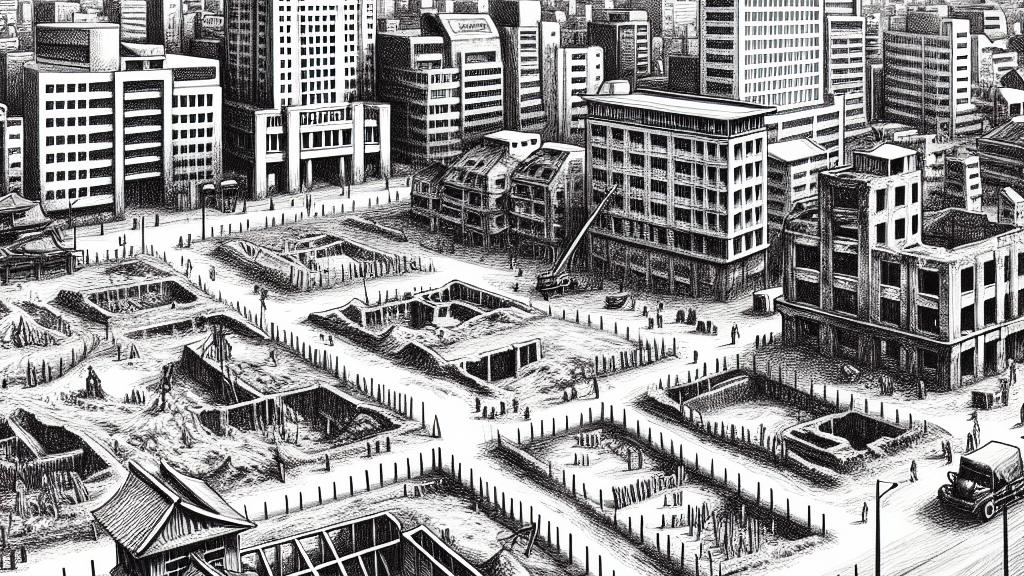Lost to Time: The Disappeared Remnants of Nagasaki's POW Camp
Overview
- Nagasaki's POW camp remains unearthed reveal crucial historical narratives.
- Impact of the atomic bombing on POWs underscores a painful legacy.
- Growing community sentiment urges preservation amidst modernization efforts.

Discovery of Historic Remains
In the bustling city of Nagasaki, Japan, the recent unearthing of the ruins of a prisoner of war (POW) camp has sparked significant national discourse. Situated approximately 1.7 kilometers from the epicenter of the atomic bomb dropped in 1945, the foundation remnants were discovered in April 2022 during preparations for a new mixed-use development called Nagasaki Stadium City. Despite the chance to preserve this historical site, city officials concluded that the remnants lacked sufficient evidence of atomic damage and therefore did not warrant protection. This decision has attracted criticism from historians and community activists who argue that such sites are vital for understanding the complex narrative of World War II and its aftermath.
Historical Context and Significance
The Fukuoka POW Camp No. 14, established during World War II, housed around 540 prisoners who were primarily soldiers from countries such as the Netherlands and Australia. The bomb's devastation claimed numerous lives—approximately 100 individuals had died from illness before the bombing, with at least eight Dutch prisoners confirmed dead due to the blast. This tragic history emphasizes the need to reflect on the suffering endured by POWs and the multifaceted effects of the atomic bombing. Currently, local government plans to transform the site into a commercial complex highlight the ongoing tension between economic development and historical preservation, raising concerns that the stories of the innocents lost may fade into obscurity.
Community Reactions and Future Implications
In response to the city's decision, local advocacy groups have voiced their disappointment passionately, arguing that the remains of the POW camp represent an essential aspect of Nagasaki's war history. These activists contend that the stories of both Japanese citizens and foreign POWs should not only be preserved but also celebrated and taught to future generations. As urban development continues to encroach on historical sites, many community members are left questioning how best to balance modernization with the desire to honor and remember the past. The push for actively engaging in discussions about preservation is critical, as it enables society to confront its history and acknowledge the human cost of conflict.
Cultural and Educational Opportunities
The discovery of the POW camp remnants presents an invaluable opportunity for cultural and educational initiatives aimed at recognizing the past. Local institutions, including the Nagasaki Atomic Bomb Museum, can play a pivotal role in collaborating with community organizations to develop programs that shed light on the experiences of POWs in connection with the atomic bombing. Initiatives could encompass memorial ceremonies, educational workshops, and exhibitions that honor the lived experiences of all victims of war, fostering greater awareness of the complexities of conflict as well as promoting dialogues around peace, reconciliation, and cultural heritage. Such endeavors can help ensure that we learn from history rather than repeat its mistakes.
Conclusion: A Call for Proactive Preservation
The unearthing of the POW camp foundations in Nagasaki underscores an urgent need for society to proactively engage in preserving significant historical narratives. As urban development plans proceed, the voices advocating for the preservation of historical sites become increasingly crucial. Recognizing and conserving such locales not only serve as reminders of the trials faced by people during times of war but also provide vital lessons for future generations to learn from past mistakes. By fostering open dialogues about historical preservation within the community, Nagasaki can embrace a renewed commitment to engaging with its complex past, ensuring that the memories of those affected by the atomic bombing and the experiences of POWs are never forgotten.

Loading...